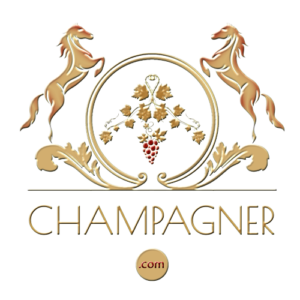CHAMPAGNER
The 50 most important champagne brands & houses
The 50 most important champagne brands are described in detail on the following pages. These brands are among the most important and most frequently available champagnes on the market. However, if you are missing a brand or if you yourself are the producer of a champagne house that we have not described or possibly not reproduced correctly, please do not hesitate to contact us.
Origin and production
Champagnethe fine sparkling wine, comes from the renowned wine region of Champagne in France. Production is subject to strict, fixed rules that ensure that every drop of champagne meets the highest quality standards. In French, this sparkling wine is known as "vin de Champagne", while in German it belongs to the category of sparkling wines.
The importance of champagne
Champagne is the ultimate luxury drink for festive occasions worldwide. It is recognised as one of the finest drinks and is a must at any first-class event. Its uniqueness and elegance make it the preferred choice for special celebrations and important moments.
The production process: Méthode Traditionnelle
The special effervescence of champagne comes from a second fermentation, known as the "méthode traditionnelle" or "méthode champenoise". In this process, carbon dioxide is produced naturally, creating the characteristic bubbles.
Legal requirements for the designation "Champagne"
Only sparkling wine that is produced according to the strict rules of the "méthode traditionnelle" or "méthode champenoise" and whose grapes come from the Champagne region may be called Champagne. The entire production process must also take place in Champagne. These requirements are laid down in the French Appellation d'Origine Contrôlée (AOC), which guarantees the protection and authenticity of Champagne.
The regions of Champagne
Champagne is divided into several sub-regions, each of which offers unique conditions for growing grapes. The best-known sub-regions are Montagne de Reims, Vallée de la MarneCôte des Blancs and Côte des Bar. Each of these regions contributes to diversity and quality through their specific soil and climatic conditions.
Champagne grape varieties
The three main grape varieties used in the production of champagne are Chardonnay, Pinot Noir and Pinot Meunier. Chardonnay brings elegance and freshness to champagne, Pinot Noir lends structure and complexity, while Pinot Meunier provides fruitiness and softness. The art of champagne production lies in the skilful combination of these grape varieties to create harmonious and balanced cuvées.
Champagne houses and their importance
Champagne is home to numerous renowned champagne houses that are known worldwide for their excellent products. These houses, such as Moët & Chandon, Veuve Clicquot, and Dom Pérignon, have a long tradition and contribute significantly to the fame and reputation of champagne. Each house has its own secrets and techniques that are passed down from generation to generation and contribute to the unique identity of their champagnes.
Champagne and its storage
Champagne should be stored in a cool place away from light to preserve its quality. A constant temperature between 10 and 15 degrees Celsius is ideal. The bottles should be stored horizontally so that the cork remains moist and no air can penetrate. If stored correctly, champagne can mature for many years and gain in complexity.
Champagne is more than just a drink; it is a symbol of elegance, luxury and celebration. Its production and origin make it a unique product that ensures unforgettable moments on special occasions. The attention to detail and strict quality standards that go into every bottle reflect the rich tradition and craftsmanship of Champagne.
